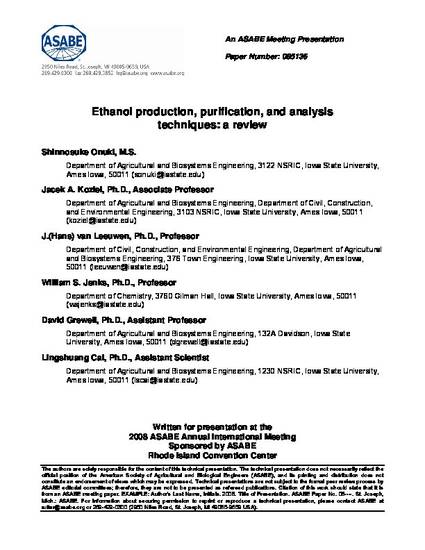
World ethanol production rose to nearly 13.5 billion gallon in 2006. Ethanol has been part of alcoholic beverages for long time, but its application has expanded much beyond that during the 20th Century. Much of the recent interest is in the use of ethanol as fuel. In this paper, we have reviewed published literature on current ethanol production and separation methods, and chemical and sensory analysis techniques. Ethanol produced by fermentation, called bioethanol, accounts for approximately 95% of the ethanol production. It is recently widely used as an additive to gasoline. Corn in the Unites States and sugarcane in Brazil are widely used as raw materials to produce bioethanol. Cellulosic materials are expected to be the ultimate major source of ethanol and also represent a value-adding technology for agricultural coproducts. While bioethanol is considered as a sustainable energy source, it requires further purification for uses other than fuel. The most common purification technique utilized in the ethanol industry is rectification by further distillation. However, distillation has critical disadvantages including high cost and limited separation capacity. Several alternatives have been proposed to replace distillation such as non-heating fractional distillation by ultrasonic irradiation, oxidation of impurities by ozone, and adsorption of impurities by activated carbon or zeolite. Chemical and sensory analyses are used to determine the quality of alcohol and to optimize various steps in production. Near-infrared (NIR) spectrometry, high performance liquid chromatography (HPLC), gas chromatography (GC), and mass spectrometry (MS), have been developed for chemical analyses. Also, olfactometry is common for sensory analysis. This paper summarizes the state-of-the art of ethanol production, purification, and analytical techniques.
Available at: http://works.bepress.com/david_grewell/16/

This is an ASABE Meeting Presentation, Paper No. 085136.